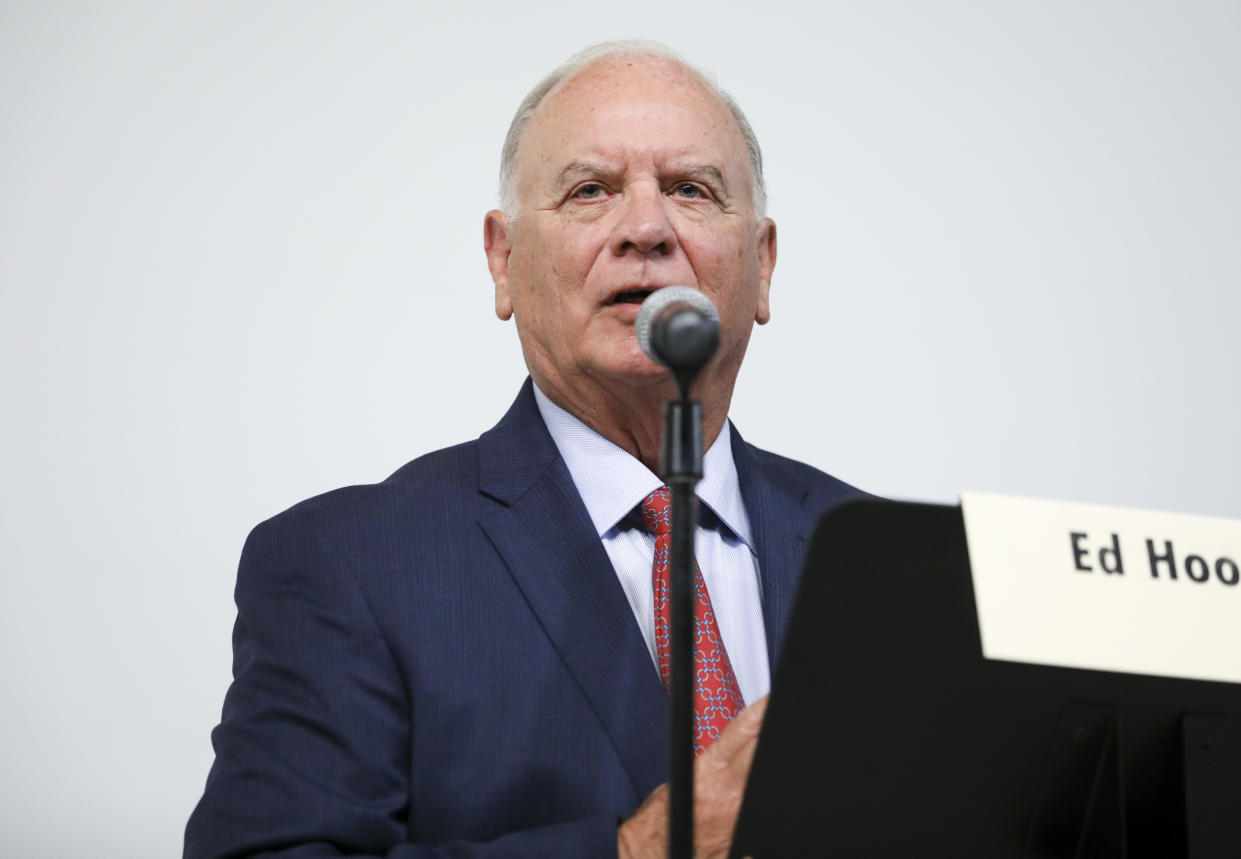Tampa Bay lawmaker who called U.S. 19 pedestrian project ‘waste’ walks back claims

In October, state Sen. Ed Hooper publicly took aim at a project in his own neck of the woods, and at the state for funding it with what he called a “waste” of taxpayer money.
“It should be alarming to all of us that (the Florida Department of Transportation) is investing over $242 million of Florida’s taxpayer dollars to construct three pedestrian underpass tunnels along U.S. 19,” the Clearwater Republican wrote in an op-ed published by the news website Florida Politics. Hooper directed readers to a website where they can fill out a form asking Gov. Ron DeSantis to “Dump the Humps.”
But the dollar figure he cites is for a much larger project. And it doesn’t include three pedestrian tunnels.
The Department of Transportation does in fact have a $242 million U.S. 19 project slated to begin early next year between State Road 580 and Curlew Road. But that price tag covers an entire highway renovation project, including two new interchanges, that the Department says is necessary to relieve congestion. There are three pedestrian crossings included in the project, but only one of them, at Republic Drive, is a dedicated pedestrian underpass of the kind Hooper described. A department spokesperson said the underpass will cost about $2.6 million, or about 1% of the total budget.
Hooper said in an interview Monday that he never meant to mislead people, or to suggest that he doesn’t support reconfiguring that stretch of U.S. 19.
“Maybe I don’t write the best op-eds,” he said. “I’ll make sure I have someone else check what I choose to submit. The project itself is necessary.”
The U.S. 19 project has been in the works for decades: Department of Transportation spokesperson Kris Carson said Pinellas County first asked for it in 1990. Whit Blanton, the executive director of the county planning agency Forward Pinellas, said it’ll be a boon to motorists from Pinellas and Pasco counties. To make the reconstructed road safe for pedestrians and bicyclists, Blanton said, Forward Pinellas asked the Department of Transportation to include pedestrian crossings every quarter- to half-mile.
“It’s a recognition that if we do it with the road construction it’s a hell of a lot cheaper than going back after the fact, after people are dying, to go back and put one in,” he said. An overpass added at Harn Boulevard and U.S. 19 after highway reconstruction was already finished cost $8 million, he said.
Hooper said he still opposes the pedestrian crossings because he doesn’t think people will use them. Blanton acknowledged the area has fairly low foot traffic for now, but said he’s planning for the future. Forward Pinellas expects an increase in housing density in that area, he said, and predicts apartments will spring up alongside the mobile home communities and gated condo complexes that already flank U.S. 19. Another of the crossings, an overpass at Northside Drive, will eventually connect to the Duke Energy Trail. (The third crossing will run along one of the interchanges at Boy Scout Road.)
And some people do travel the area on foot already, sometimes with disastrous results. In 2016, 2020 and 2021, pedestrians were killed while apparently trying to cross U.S. 19 near one of the planned crossings. At least three others have been seriously hurt since 2016, according to the Department of Transportation.
“Their contention is, nobody is ever going to use it,” Blanton said. “Nobody ever uses it today because it’s unsafe today.” He invoked a favorite saying: “Nobody ever built a bridge by counting the number of swimmers.”
Hooper has argued that underpasses, despite the safety-oriented planning, would make the area more dangerous.
“Pedestrian underpasses are not safe and are becoming increasingly known as ‘Drug Alleyways’ among the homeless population, providing a significant safety concern among residents with overpriced and unpassable walkways,” he wrote in his op-ed.
Blanton said he knew of no evidence to support that claim. He’s heard no complaints about a similar structure where the Pinellas Trail passes under Alternate U.S. 19 in Palm Harbor. And of several others around the state, he could only think of one, in Gainesville, that has had repeated drug or safety problems. He said Forward Pinellas is looking into installing public art in the Republic Drive crossing once it’s complete.
Some cities have found that people without housing are at the most risk when roads lack pedestrian safety features. A recent analysis by the Los Angeles County Department of Public Health found that homeless people were 16 times more likely than the rest of the population to die of traffic-related injuries, and a Portland Bureau of Transportation study determined that 70% of pedestrians fatally struck by vehicles in the Oregon city in 2021 were homeless.
Asked how he came upon his “drug alleyways” comment, Hooper said he went on impulse.
“I have nothing specific or scientific,” said Hooper, a retired fire lieutenant. “I have a gut feeling from all my days of seeing people living under bridges and my first responder days from years ago. It creates an opportunity to get out of the weather and be under a shelter, and if you have devious things in mind, that’s where they typically seek to be.”
Hooper’s complaints haven’t halted or delayed the project, though he said he plans to talk more with the Department of Transportation’s secretary and district secretary. He was appointed to the Senate Transportation Committee on Monday.
Blanton said he was nevertheless disturbed that a longtime local political power player had seemingly tried to shut down a “long overdue” project. Had Hooper succeeded, Blanton said, it likely would have taken another five years to regain the funding and move forward.

